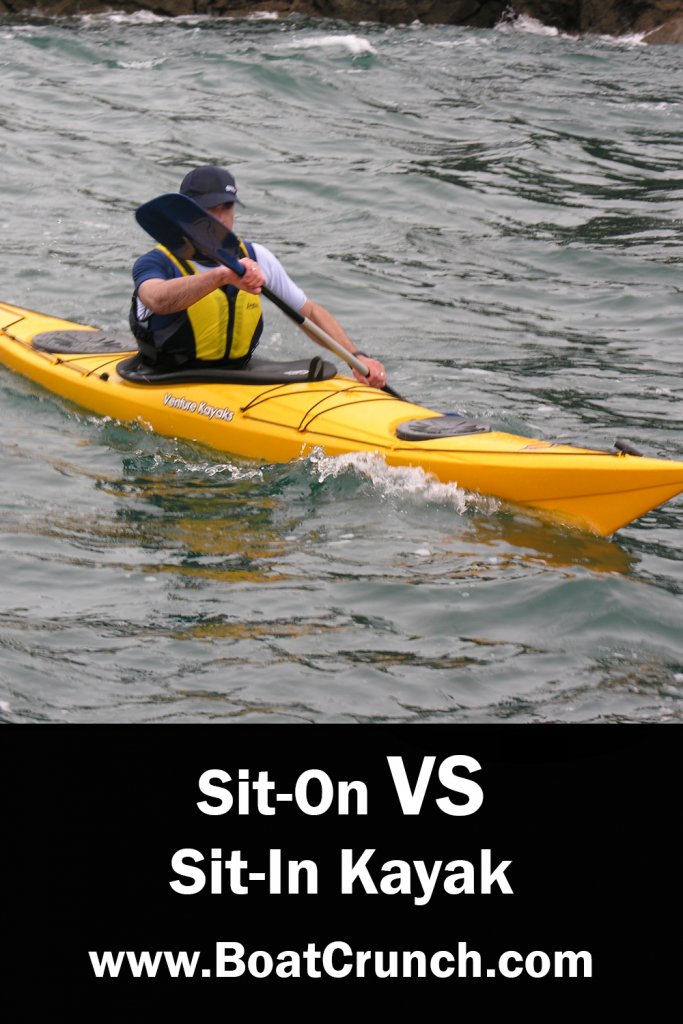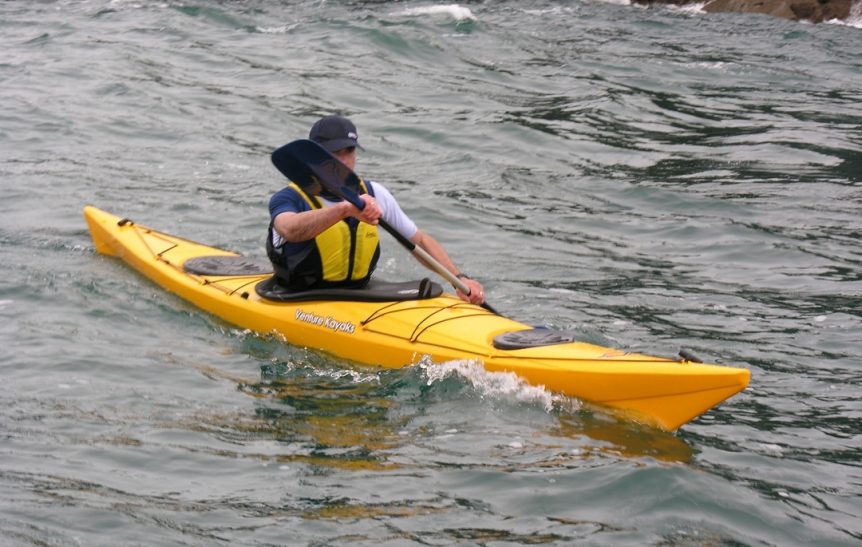
For someone new to kayaking, there are many things that you should know before taking your first try. With many different types, brands, construction, and many more, choosing the single kayak that would be the best for you can be daunting.
A kayak is a type of boat that features a small and slim body. It can be used by only a limited number of people. And most often, can accommodate only a single person at a time. Others call them canoe because it looks the same. It is considered as sports equipment as it is used in aquatic races and sports. Kayaks are also used for fishing, leisure, and other activities.
So, how does a new paddler like you can determine the kayak that suits you best? The first step is to understand the type of kayak that you need. There are two types of kayak, sit-on-top, and sit-inside designs. Each of these designs greatly differs from each other and both of them have their advantages and disadvantages.
This article is meant to give you information to understand the major differences between these two types of kayaks, some of the factors that you need to consider and decide on which type of kayak would be best for you.
Sit-on-Top Kayaks
How can you tell the sit-on-top kayak from the other type? What are its distinct features? The sit-on-top kayak, as the name suggests, has no enclosed cockpit. With that in mind, you can already picture how the paddler would position himself.
Instead of positioning himself inside the kayak or at below the water level, the paddler is sitting on top of the vessel above the surface of the water in the sit-on-top kayak.
Compared with the other type, the sit-on-top kayak is more popular. Its design is more friendly to kayak fishermen and novice paddlers because it does not make them feel trapped while inside the boat when it capsized. It is also more convenient to board the kayak, in case the paddler has accidentally overturned.
Here are the pros and cons of the sit-on-top kayak.
Pros of the Sit-on-Top Kayak
There are plenty of things to love about sit-on-top kayaks, but the most important of them all is its versatility when it comes to the number of passengers. It can accommodate multiple passengers, two to three paddlers. It is not only the choice of most fishermen but for photographers, and hunters too. More advanced paddlers even load it up with foot-driven pedaled propellers to zip and cut through the waters.
- Easy to Board – As mentioned, the first advantage of the sit-on-top kayak is it has an open cockpit design. It means that the paddler is not confined inside the boat when it capsized. It is also easier and swifter to board. You just hop from the dock, beach, or pontoon boat.
- A higher degree of stability – Sit-on-top kayaks are designed with a higher center of gravity and are much wider than the sit-inside type. This contributes to a higher degree of initial stability. It means that the kayak remains upright when the paddler is sitting on the kayak, and the keel is directly underneath.
- Unsinkable – Thanks to the completely enclosed design of the sit-on-top kayak, it is unsinkable.
- Easy to drain – In case the boat accidentally capsized, it is easy to drain the water out of the boat, due to its self-bailing scupper holes. For this reason, sit-on-top kayaks are an excellent choice for paddlers in surf zones because they don’t have to carry a bilge pump with them.
- Roomy – Another advantage of the sit-on-top is the open tank well where you have plenty of room to carry bulk items like coolers to keep things cold.
- Multiple people use – The sit-on kayaks to accommodate hundreds of pounds of weight, so it can accommodate two or three paddlers depending on their weight.
- Open for customization – Many paddlers customize their sit-on-top kayaks to accommodate their needs and wants, including accessories like GPS devices, fishing rods, rudders, cameras, and many others.
Cons of Sit-on-Top Kayaks
You need to have it both ways. Here are the drawbacks of sit-on-top kayaks.
- Slower – Since sit-on-top kayaks have wider beans, they are generally slower than the sit-inside option with a lesser width. It also requires more effort from the paddler to propel it forward. Thus, it is better for short-range kayaking and fishing.
- Lower secondary stability – Its strength also becomes its weakness. Due to its wide beam and higher center of gravity, sit-on-top kayaks have a lower degree of stability. What does it mean? It simply means that the boat tends to stay upright when leaning on the edge from turning or when paddling in rough seas.
- Limited control – The open cockpit of sit-on-top kayaks does not allow the paddler to place their knees again on the underside of the boat. This limits the paddler’s control of the boat and its maneuverability.
- Longer paddle – Another disadvantage of a sit-on-top kayak is its wide beam that forces the paddler to use a longer kayak paddle. It gives a longer Moment of Arm that requires more effort to propel it forward.
- Not enough protection – The open cockpit design exposes the paddler to the elements like the sun, wind, or waves that break over the bow.
- No accumulation of water – The self-draining scupper holes at the bottom of the sit-on-top kayaks causes the boat to always have a small amount of water on the bilge.
Sit-Inside Kayaks
As the name implies, the sit-inside kayaks feature an enclosed cockpit. Instead of the paddler sitting on top of the kayak and above the water level, he or she is positioned inside and below the surface of the water.
The sit-inside type of kayak is more popular with intermediate and advanced paddlers. The reason behind this is because it is designed with a higher degree of secondary stability that allows the paddler to lean over the edge while turning or paddling on rough seas. It also offers a lower center of gravity, which is advantageous to its paddler.
Pros of Sit-Inside Kayak
- Lower center of gravity – The biggest advantage of a sit-inside kayak is its lower center of gravity. With such a feature, it also has a higher degree of secondary stability that enables the paddler to lean more on the side of the boat when turning.
- Faster – With the lower center of gravity, the sit-inside kayak is narrower and is generally faster than the sit-on-top kayak. Therefore, this boat requires less effort from the paddler to drive the boat forward. It is highly recommended for use during long day paddling and expedition.
- Greater maneuverability – Thesit-inside kayak allows the paddler to place their knees against the underside of the boat providing better control and greater maneuverability.
- Better protection – The enclosed cockpit of this kayak gives the paddler some kind of protection against the elements like the sun and the waves. It is also possible to attach a spray skirt to the boat.
- Requires shorter paddle – The sit-inside kayak has a narrow beam and allows the paddler to use a shorter paddle. As a consequence, it also has a shorter Moment of Arm that requires less effort to move the kayak forward.
- Keep the paddler dry – Thesit-inside kayak has no self-draining scupper holes at its bottom. It allows the cockpit to remain dry.
Cons of Sit-Inside Kayak
Despite the many advantages of the sit-inside kayaks, it also has several drawbacks. Let us take a look at them.
- Open cockpit – The biggest disadvantage of the sit-inside kayak is it’s being an open cockpit. It makes the paddler feel more confined while inside the kayak when it capsizes, and it is also difficult to get back on it.
- Can sink – The sit-inside kayak can be filled with water when its hatch covers come off in the open seas. This will allow the stern and the bow to hold more water and sink.
- Lower center of gravity – Sit-inside kayaks have a lower center of gravity. Thus, it also has a lower degree of initial stability which makes the kayak to remain upright when the paddler is sitting on the boat with the keel under him.
- Needs bilge pump – It is a necessity for the paddler to have a bilge pump when they are using the sit-in kayak to remove the water from the cockpit.
- Limited space – The sit-inside kayak has small hatch covers and no open tank well in its stern. This provides limited storage space to carry items on the boat.
Conclusion
There you have it. The detailed pros and cons of the two types of kayaks, the sit-on-top, and the sit-inside kayak. With this analysis, we can conclude that sit-on-top kayaks are good for beginning paddlers and fishermen because they have a high degree of stability for short distance kayaking. The sit-inside kayak, on the other hand, is more appropriate for intermediate to advanced paddlers who want a kayak that is fast and appropriate for a longer period of kayaking.
In conclusion, it is important to note that your choice of the kayak will depend on where you are going to use the boat. Make sure that you have identified its intended use before purchasing a sit-on-top or sit-inside kayak.

My name Is Larry Noel, the voice behind BoatCrunch.
I’m a boating enthusiast that loves nothing more than being out on the water. So much so that I’ve acquired a Degree in Marine Biology (MB) as well as a degree in Ocean Engineering (OE).
I’m very familiar with a wide range of different boats and I’ve owned a variety of different boats myself however I have a particular obsession with Pontoon boats. I’ve lived all across the United States and always kept company in the form of boats and now my loving family.

